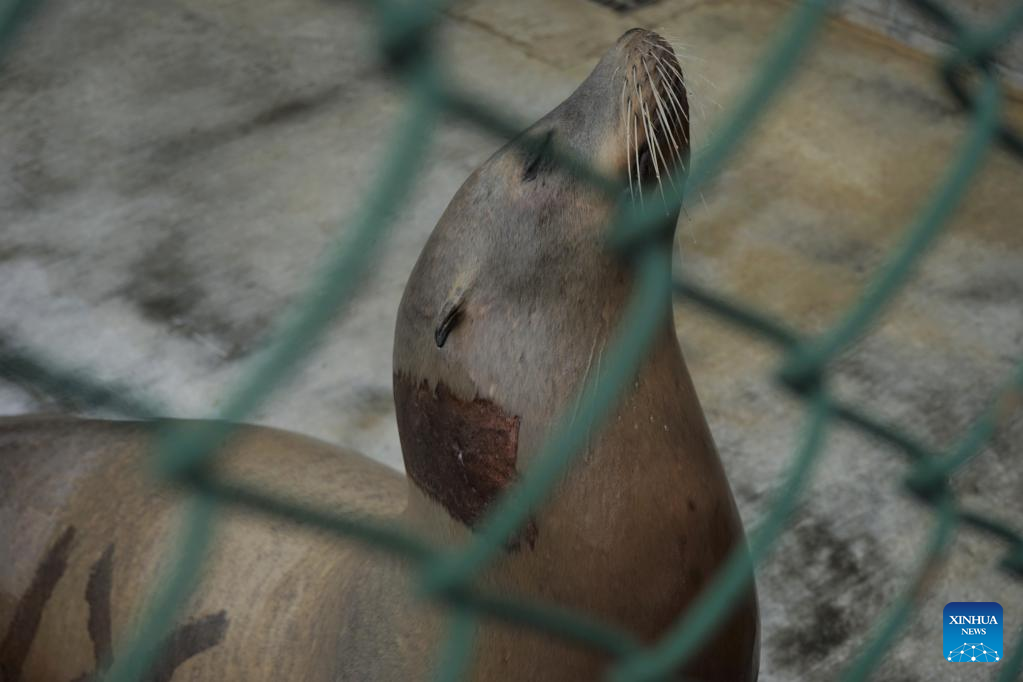
Photo taken on June 30, 2023 shows a rescued sea lion at the Marine Mammal Care Center in San Pedro, California, the United States. Vacationers visiting beaches of U.S. state of California this July Fourth weekend are likely to encounter an alarming sight: sick sea lions recovering on the sand. Officials from the National Oceanic and Atmospheric Administration (NOAA) called it a large-scale stranding event. (Photo by Zeng Hui/Xinhua)
by Julia Pierrepont III
SAN PEDRO, the United States, July 3 (Xinhua) -- Vacationers visiting beaches of U.S. state of California this July Fourth weekend are likely to encounter an alarming sight: sick sea lions recovering on the sand. Officials from the National Oceanic and Atmospheric Administration (NOAA) called it a large-scale stranding event.
Scientists suspected that it was caused by red tide, another name for an excessive bloom of certain phytoplankton -- tiny sea veggies that most fish and sea mammals feed on.
They noted that with global warming heating up California's waters, red tide has become a reoccurring problem off the coast, posing health concerns for much marine life, including sea lions, seals, otters, dolphins, and even whales.
The sick and dead wildlife started showing up in Ventura and Santa Barbara counties several weeks ago, and the numbers have since increased and spread to further southern counties including Los Angeles, Orange and San Diego.
More than 100 dolphins have died in the past several weeks, Justin Viezbicke, NOAA's California marine mammal stranding coordinator, told the Ventura County Star newspaper Saturday, adding that Southern California also reported "hundreds of sea lions coming ashore."
"Right now, we're responding to a massive number of animals affected by this harmful algal bloom," Dave Bader, the Marine Mammal Care Center (MMCC) Los Angeles' chief operations and education officer, told Xinhua in an exclusive interview Friday.
He added that an accurate number of how many marine animals had been affected was impossible to assess, since most head out to see when they are ill.
"Our local center currently has 100 animals that we are treating medically and keeping them calm and in a safe environment where they can rest and recuperate."
MMCC is a non-profit organization with global outreach, and the hospital located in Los Angeles would take care of marine animals stranding on the over 100 kilometers of beaches from Malibu to Seal Beach due to illness, injury and malnutrition.
Bader explained that the center has already had to order another 50,000 pounds (22,679.6 kilograms) of food to keep up with the influx of sick animals, adding that the center is projecting an additional quarter of a million U.S. dollars in crisis expenses over and above their normal budget.
While generally an excellent and nutritious food source, some phytoplankton can be dangerous to eat, especially in unnaturally high concentrations when the red tide occurs. One such, Lingulodinium polyedra, looks red in high concentrations and creates stunning bioluminescent displays in the water at night, but unfortunately, it also depletes oxygen levels in the ocean and leads to massive fish kills.
Another, even more harmful algae, Pseudo-nitzschia, produces domoic acid, a powerful neurotoxin, that attacks the brain and heart of sea animals that feed on them.
"Domoic acid poisoning causes everything from dehydration, lethargy, behavioral changes, unnatural, aggression, seizures, and even death if left untreated," said Bader.
When conditions are favorable, such as warmer water, temperatures caused by global warming, and nutrient, rich waters, Pseudo-nitzschia populations can rapidly increase, leading to massive "blooms" which are consumed by fish and animals further up the food chain.
And this year, these toxic red tides have been observed in multiple locations along the California coast. California's coastal water temperatures are usually cold enough to inhibit this bloom, but global warming has been causing more frequent warming trends that have triggered the emergence of bigger and longer lasting red tides.
Bader told Xinhua, "The National Oceanic and Atmospheric Administration is saying this is the largest bloom and most significant event they've seen in history." And though these blooms usually last for only two weeks, this one is now stretched on for six weeks and it's still going strong.
Bader said that marine animals most at risk are sea lions, seals, otters, and dolphins. "California has one of the most abundant and biodiverse coastal ecosystems on earth, so crises like this can be devastating to multiple marine populations."
The poisoned sea animals the center treats experience multiple symptoms, including reduced reproductive success, weakened immune systems, skin irritations, respiratory distress, gastrointestinal issues, seizures, brain damage, and when left untreated, death.
Especially susceptible are mothers and their cubs. June is a month when all sea lions give birth, Bader explained. But sadly, this year they were born into a toxic soup and many didn't stand a chance. The MMCC is currently hosting many mothers and newborn cubs struggling to survive.
To help find and rescue distressed sea mammals, the center maintains a 24/7 hotline that allows concerned citizens and beachgoers to report sick, injured or stranded marine mammals.
Once in their care, the center's veterinarians and trained volunteers provide medical treatment, rehabilitative care, and specialized diets tailored to the individual needs of each animal.
The center's ultimate goal is to restore the health of these animals and release them back into their natural environment.
"Public support is crucial to the success of our mission," said Bader, highlighting the center's many supportive partners, including L.A. County, NOAA, supervisors and local lifeguards.
"We couldn't do what we do without the support of the public and our generous donors," he said.
Bader asked local residents to be even more proactive and aware, urging them to think about ocean conservation, buy sustainable seafood, lower their carbon footprint and think environmentally.
"We live in an urban environment and think of 'the wild' is being a place that's far from us. But here in California, it isn't. It's right here in our local beaches, so we must learn to share the shore with our native wildlife," he advised. Enditem.
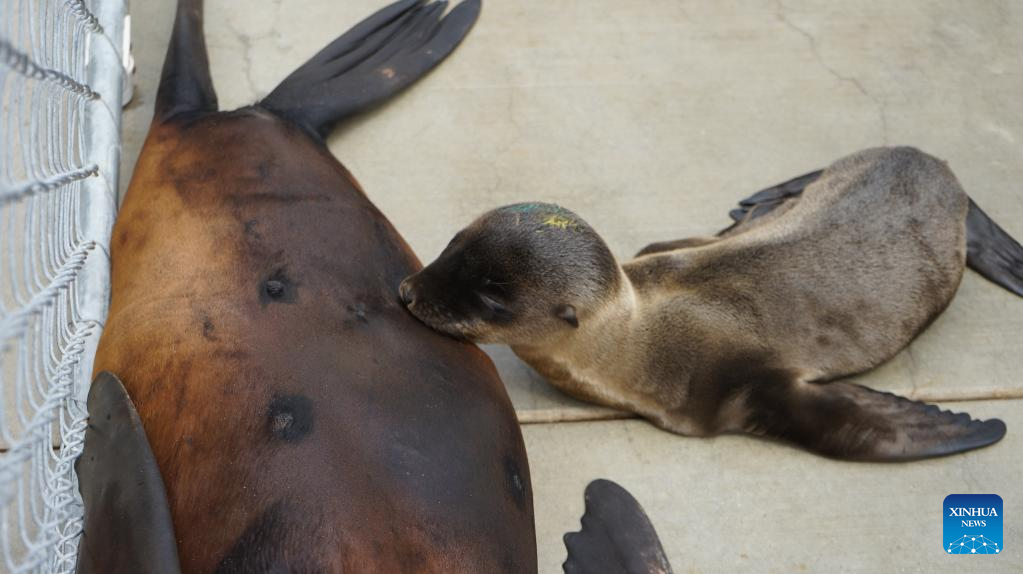
Photo taken on June 30, 2023 shows rescued sea lions at the Marine Mammal Care Center in San Pedro, California, the United States. Vacationers visiting beaches of U.S. state of California this July Fourth weekend are likely to encounter an alarming sight: sick sea lions recovering on the sand. Officials from the National Oceanic and Atmospheric Administration (NOAA) called it a large-scale stranding event. (Photo by Zeng Hui/Xinhua)
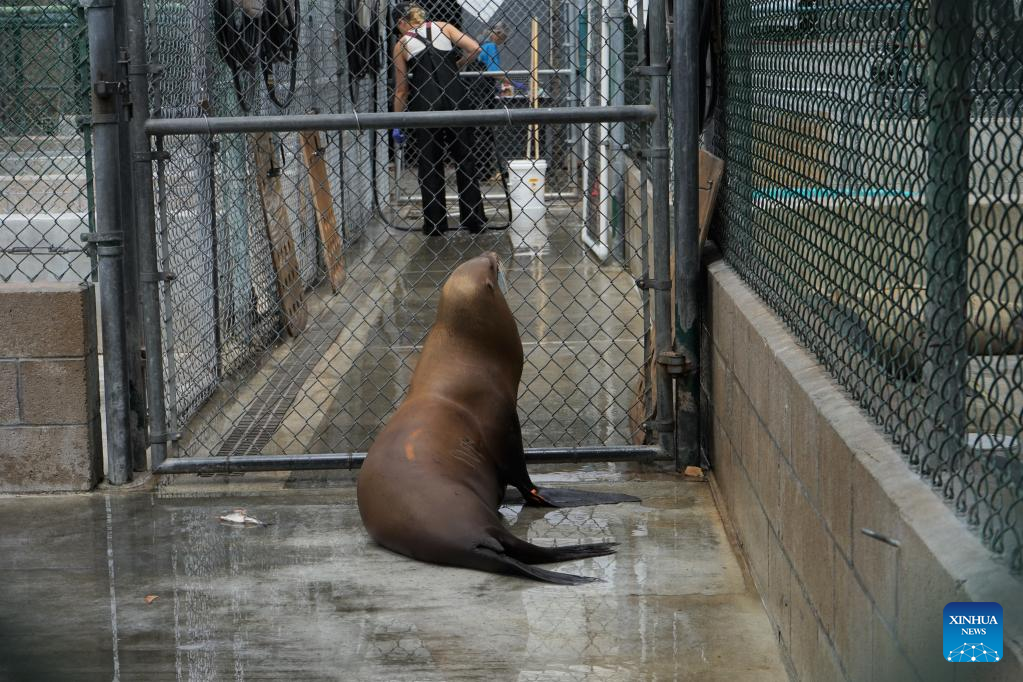
Photo taken on June 30, 2023 shows a rescued sea lion at the Marine Mammal Care Center in San Pedro, California, the United States. Vacationers visiting beaches of U.S. state of California this July Fourth weekend are likely to encounter an alarming sight: sick sea lions recovering on the sand. Officials from the National Oceanic and Atmospheric Administration (NOAA) called it a large-scale stranding event. (Photo by Zeng Hui/Xinhua)
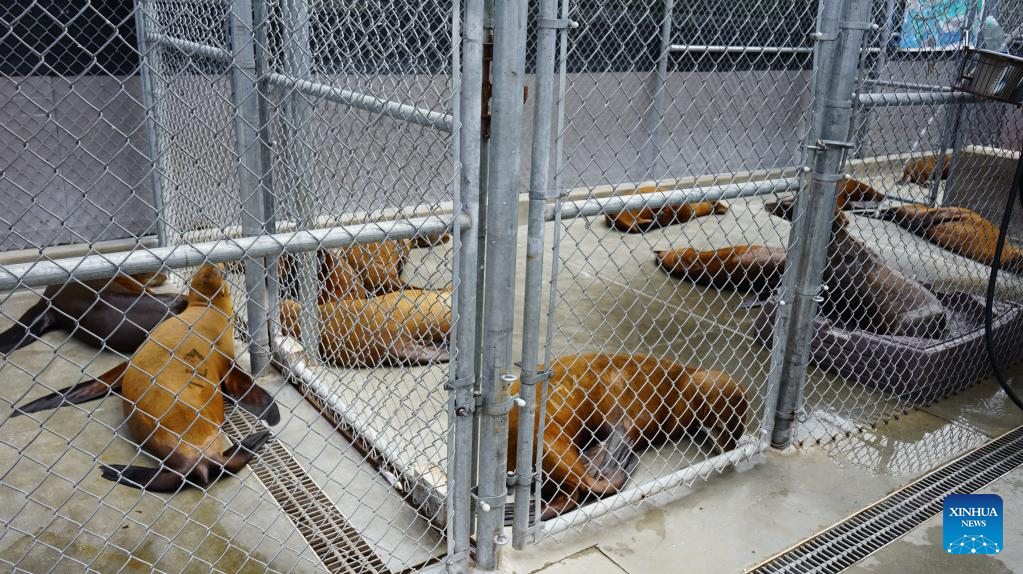
Photo taken on June 30, 2023 shows rescued sea lions at the Marine Mammal Care Center in San Pedro, California, the United States. Vacationers visiting beaches of U.S. state of California this July Fourth weekend are likely to encounter an alarming sight: sick sea lions recovering on the sand. Officials from the National Oceanic and Atmospheric Administration (NOAA) called it a large-scale stranding event. (Photo by Zeng Hui/Xinhua)
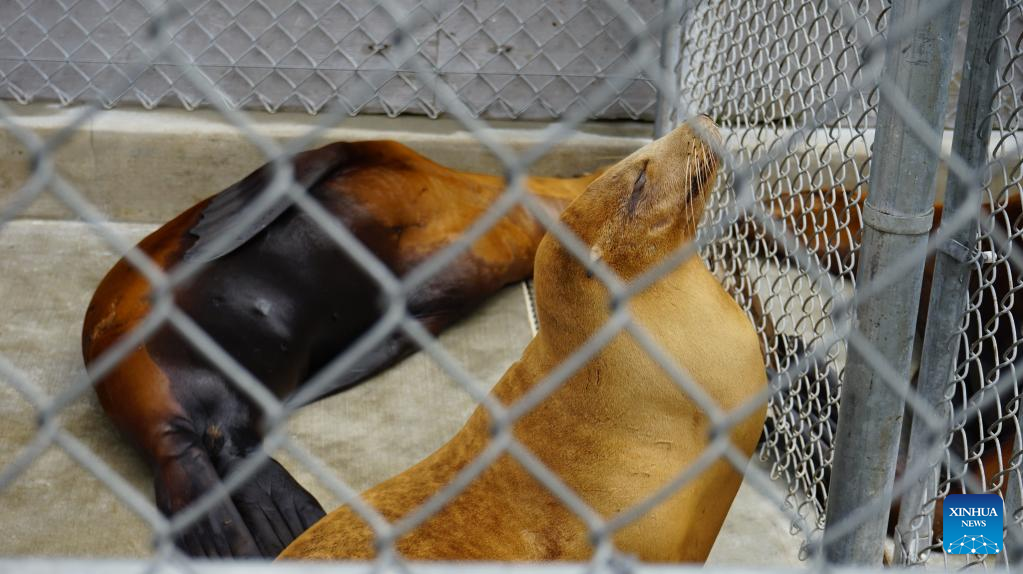
Photo taken on June 30, 2023 shows rescued sea lions at the Marine Mammal Care Center in San Pedro, California, the United States. Vacationers visiting beaches of U.S. state of California this July Fourth weekend are likely to encounter an alarming sight: sick sea lions recovering on the sand. Officials from the National Oceanic and Atmospheric Administration (NOAA) called it a large-scale stranding event. (Photo by Zeng Hui/Xinhua)



